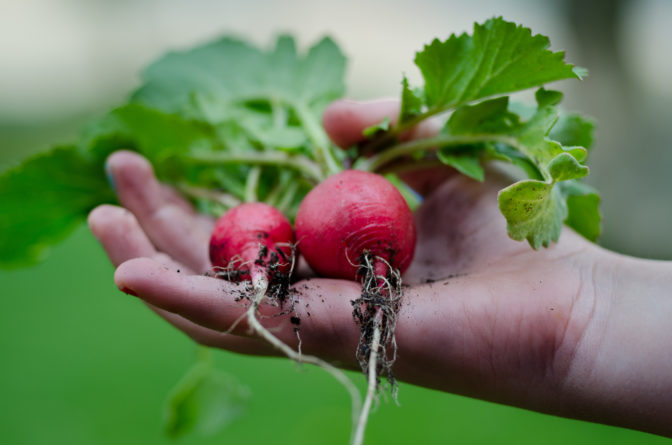Growing our own Vegetables
Organic vegetable gardening is about growing vegetables without the use of modern chemicals, making the vegetables tastier and better for you. Many vegetables that you purchase these days are grown on poor soils that leave the vegetables short of many nutrients. So if the vegetable is short of goodness then so are you when you eat it.
Maintaining your own organic vegetable garden is very rewarding, but will of course involve a certain amount of effort from you. So you not only get good vegetables to supplement your diet but you get lots of exercise as well which is also good for you.
So your organic vegetable garden will mean no chemical control of pests, diseases or weeds, and no use of chemical fertilizers. There are many other ways of controlling these problems without the use of harmful pesticides, by encouraging biological control or by encouraging beneficial predators.
The most important part of your organic vegetable garden is the soil and it is important that you test it so that you can do all that is necessary to get the soil right before you start. If your soil drains too quickly you need to dig in lots of organic matter in the form of farm or stable manure, this not only helps the soil hold more water, puts goodness into the soil as well. If your soil gets water logged then you need to get plenty of sand and grit into it as well as the manure.
You need to get the soil PH right in your organic vegetable garden or your vegetables will not grow strongly, and be more likely to be attacked by pests and diseases. The ideal soil is neutral; the PH should be 6.5 to 7. If the soil in your organic vegetable garden is too acidic then you need to add chalk or lime. If the soil is alkaline then you need to add peat or in extreme cases then powdered sulphur, but lots of organic matter will aid the problem. These are best added before the winter so that the winter rain will soak it in well.
Organic matter is the very essence or your organic vegetable garden, besides farm and horse manure, there is leaf mould, garden compost, spent mushroom compost (usually good for rising the ph), straw, pulverized pine bark (increasing in use as a peat replacement, but far longer lasting), and of course peat but this we try to limit the use of.
If you can possibly prepare your organic vegetable garden during the autumn so that the ground has the winter to mature, with all the manure and anything else you have dug in. To deter weeds from growing up you can cover the plot with old carpet, cardboard or any other material that will allow the water through but keep the light out. It will also act to keep the ground warmer for when you need to start planting.
Next you need to plan your organic vegetable garden. Rotation cropping helps to reduce pest and diseases, by not allowing them to build up in the soil. This means that different crops are grown in different sections of the garden on a five-year rotation. This also stops the soil being drained of the same nutrients each year.
Year one: as below
Year two: legumes, onions, potato family, umbellifers, brassicas
Year three: onions, potato family, umbellifers, brassicas, legumes
Year four: potato family, umbellifers, brassicas, legumes, onions
Year five: umbellifers, brassicas, legumes, onions, potato family
(Leafy Crops, needs nitrogen-rich soil, may need liming)
• Brassicas
• Cabbage
• Cauliflower
• Radish
• Swede
(Well-drained but moisture-retentive; non nitrogen-rich soil. It will fix atmospheric nitrogen in for future crops)
• Legumes
• Peas
• Broad Beans
• French Beans
• Runner Beans
(High Organic matter may need liming)
• Onions
• Garlic
• Shallots
• Leeks
• Potato
• Tomato
(High organic matter and nitrogen no lime structure. Suppresses weeds, breaks up soil)
• Umbrellifers
• Carrot
• Parsnip
• Parsley
• Celery
• Florence Fennel
Root crops need stone free soil, not freshly manured fine tilth root crops brake up soil structure
………………………………………………………………
Some plants have very few soil dwelling pest or diseases that they can be planted anywhere within the rotation. They are as follows;
Aubergines, chicory, courgettes, cucumbers, endives, fennel, French beans, lettuces, marrows, peppers, pumpkins, runner beans, squashes, and sweet corn.
Divide your organic vegetable garden into five or more sections, and then decide which crops to grow. Divide them into a plant family group, determined by sharing the same pest and diseases, then into soil requirements.
To rotate your organic vegetable garden by moving each bed back one space, so that the legumes move into the brassica bed, the brassica move into the umbellifers bed and so on.
So now you have started your organic vegetable garden.
Call back to this site as we will update with more information.
You can copy this article, providing it is copied in its entirety. Permission is granted for you to share the complete and unedited version of this article with others providing the following conditions are met; The document remains intact and entire.
The web site; www.companionplanting.net is clearly stated as the source of the document. A hyperlink to that web site is provided in any accompanying message or documentation. Found @ Sharing Sustainable Solutions
~Companion Planting


